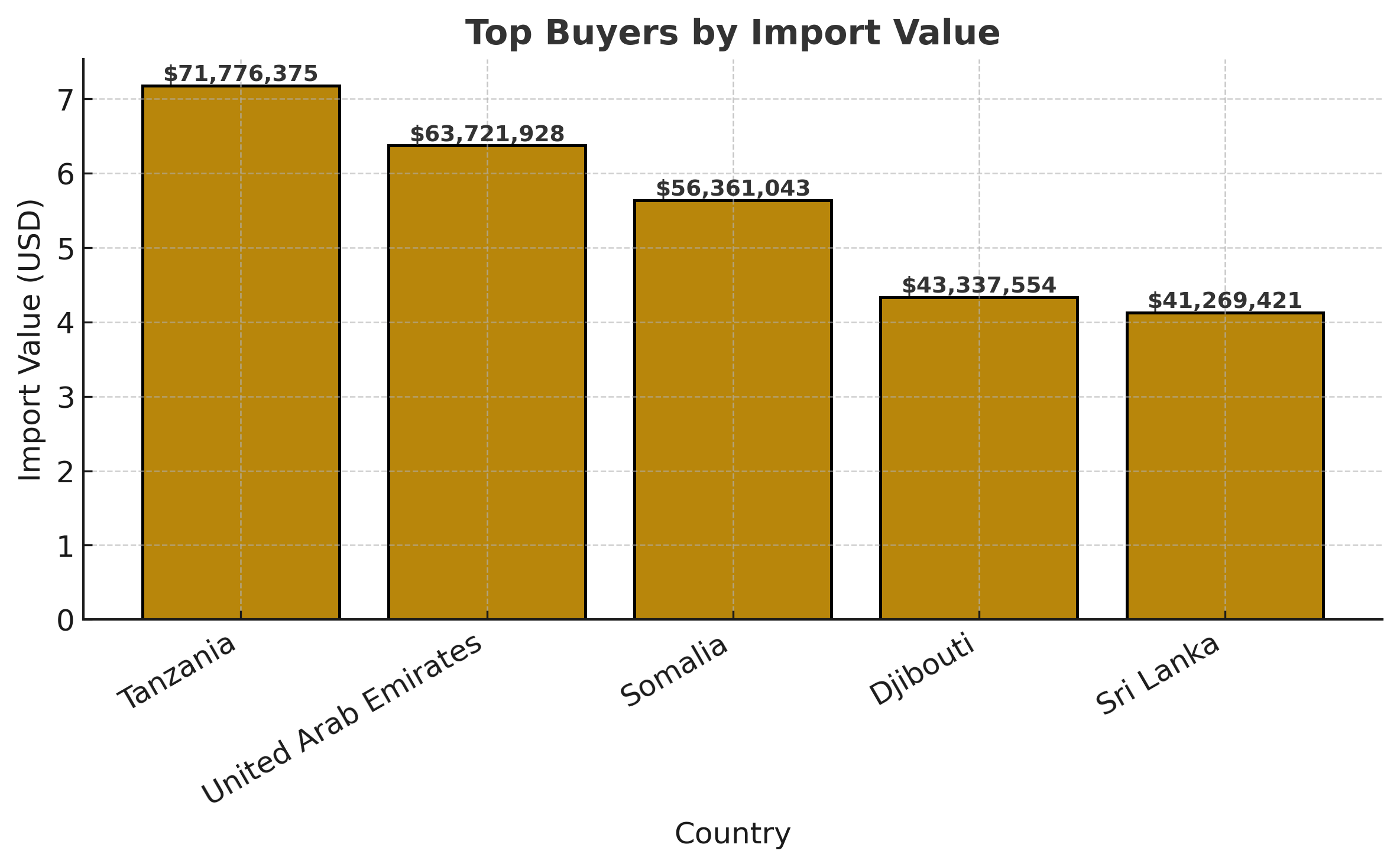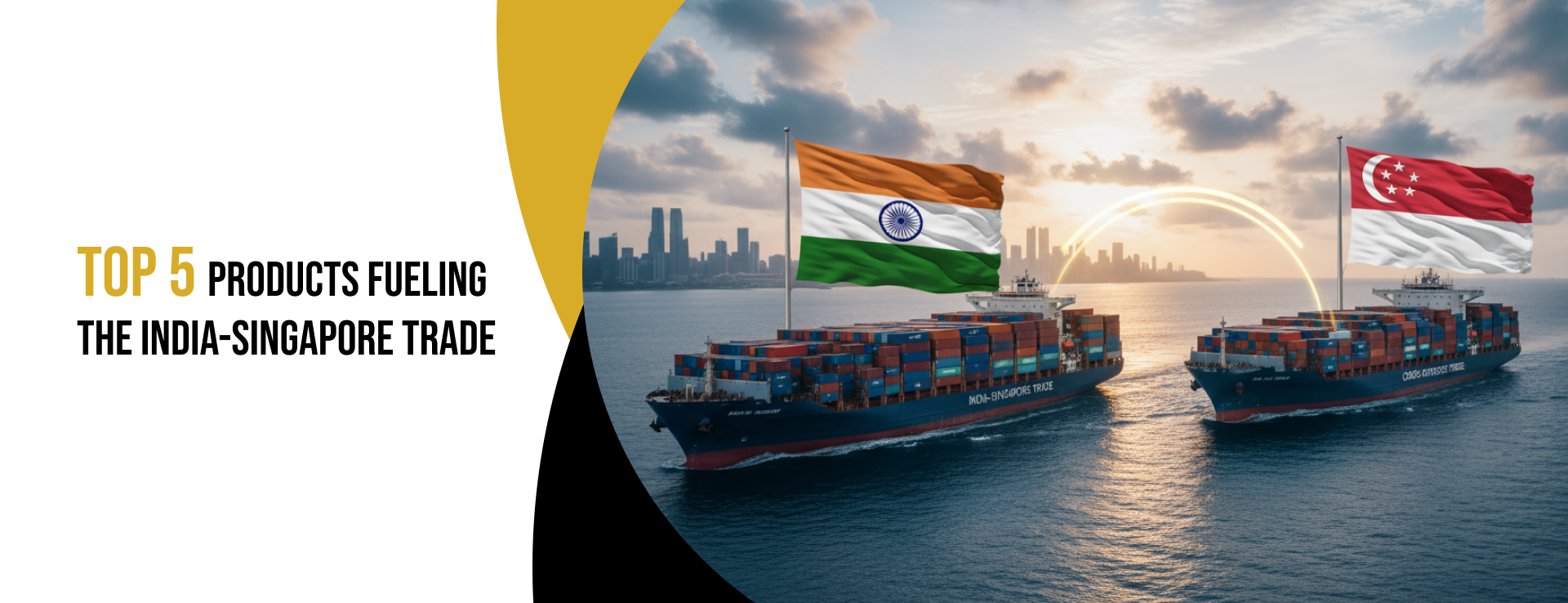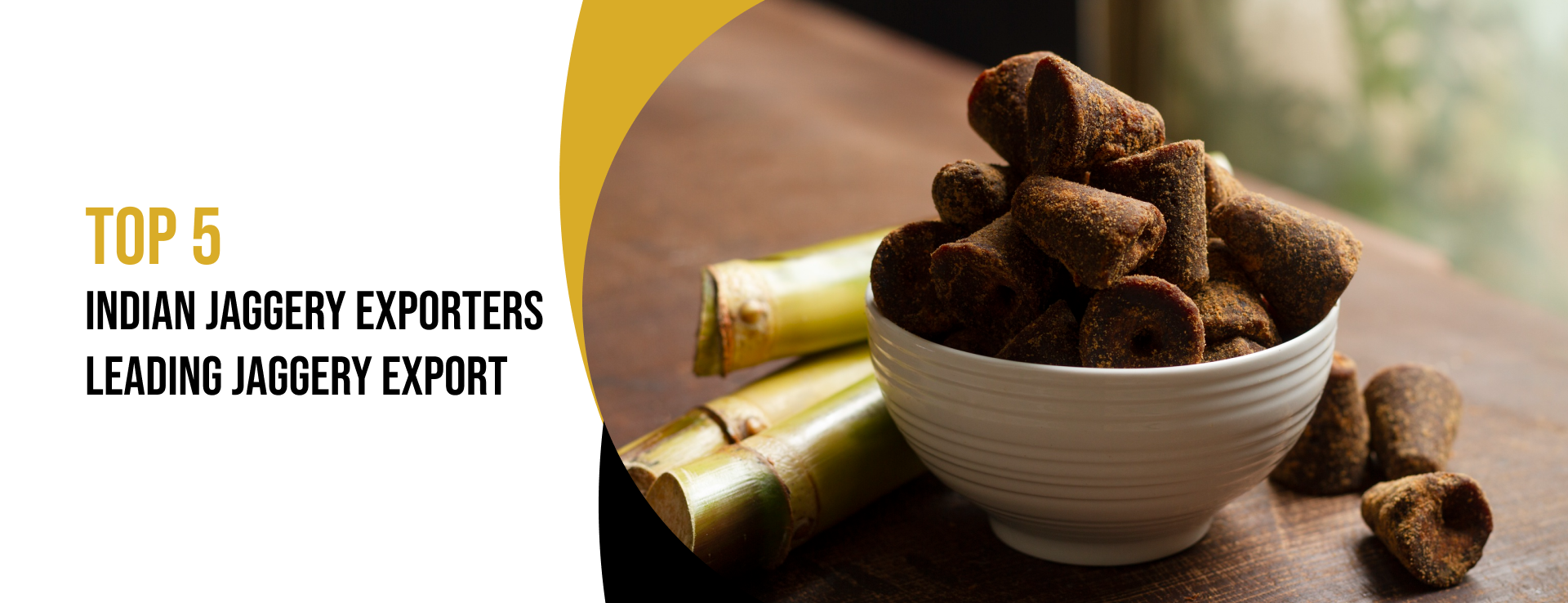Exploring India’s Sweet Success: The Rising Jaggery Export Market 2024 - 2025
Key Highlights
-
Total jaggery exports from India amounted to $0.56 billion during 2024-2025.
-
The HS codes for jaggery export in India are 170113 and 170114.
-
Garden Court Distilleries Private Limited, the Mumbai sugar and confectionary exporter, dominates the jaggery export list.
-
Tanzania is a major jaggery importing destination for India, with $71.8 million worth of imports.
-
Amro Sugars Ltd is the top buyer in the jaggery export market, with 3.03% of the overall Indian jaggery exports.
Indian Jaggery Export Market
From childhood memories of savoring gur ki roti (jaggery roti/flatbread) to choosing jaggery as a healthy substitute, jaggery has been a catalyst of sweet memories for the Indian household. The household ingredient now has global recognition. Consumers' growing preferences for jaggery as a healthy sweetener have enabled India to secure the top position in the global market for jaggery exports.
Known for national benefits and rich flavor, jaggery is used in households, confectioneries, beverages, and Ayurvedic medicines. The influence of social media is among the key elements driving people's preference for jaggery. Jaggery export continues to grow consistently with supportive trade policies, a stable supply chain, and strong infrastructure.
Companies Fueling Jaggery Export
|
Sellers |
Export Percent |
|
Garden Court Distilleries Private Limited |
13.46% |
|
Rika Global Impex Limited |
12.22% |
|
Shri Dutt India Private Limited |
9.95% |
|
Viterra India Private Limited |
6.01% |
|
Baramati Agro Limited |
5.85% |
Trade-supportive policies, agricultural resources, and trade data stabilize India's position in the global jaggery export market. As per jaggery export data, Garden Court Distilleries Private Limited (13.46%), Rika Global Impex Limited (12.22%), and Shri Dutt India Private Limited (9.95%) are among the top three contributors, followed by Viterra India Private Limited (6.01%) and Baramati Agro Limited (5.85%). Large-scale production and a stable supply chain support India's huge jaggery exports.
Countries Importing Indian Jaggery

Jaggery is created through sugarcane extracts. The process is simple and takes place in small villages of India as well as huge factories. The final products are then packed and sold in the domestic and global markets. Jaggery in India is also high in demand; the large-scale production enables the export of surplus. Indian jaggery exporters have a large network across the globe.
As per the jaggery export data, Tanzania dominates the jaggery importer list with imports worth $71.78 million, followed by the United Arab Emirates ($63.72 million), Somalia ($56.36 million), Djibouti ($43.34 million), and Sri Lanka ($41.27 million). These figures reflect India’s dominant role in the global market for Indian jaggery. The supply is driven by its large scale and quality production, expanding organic segment, and growing global network.
Major Buyers Of Indian Jaggery
|
Buyers |
Import Percent |
|
Amro Sugars Ltd |
3.03% |
|
Mohammed Enterprises Tanzania Tanzania Limited |
2.89% |
|
Unique Shipping Tir Universal Co Ltd |
2.28% |
|
Hirad Gida Import Ex Port Industry And Trade Limited |
2.27% |
|
Hanni Limited |
2.10% |
Major Buyers Of Indian Jaggery
The Indian jaggery exports run with strong trade networks, health-driven demands, hassle-free logistics, and trade data statistics. As per the latest jaggery export data, Amro Sugars Ltd from Sri Lanka (3.03%), Mohammed Enterprises Tanzania Ltd (2.89%), and Iran-based Unique Shipping Tir Universal Co Ltd (2.28%) top the Indian jaggery importers list. Next in line are Hirad Gida Import Export Industry, the Turkish food company, and Trade Limited, the Turkish food company (2.27%), and Hanni Limited, the Atlanta-based personal care brand (2.10%). These firms import Indian jaggery for distribution and industrial processes. They choose Indian jaggery due to its fine quality, organic nature, and traditional production process.
Get Access to Jaggery Export Data
Sugar Export and Its Connection To Jaggery Trade
Sugar and jaggery production go hand in hand. It starts with the boiling of the extracted sugarcane juice. The initial unfiltered layers are collected, and the dried substance is known as jaggery. The remaining pulp is further boiled, crystallized and refined, and processed into sugar. Jaggery is packed into lumps and powders, while the refining level of sugar depends on its usage in homes and industries. The combined production eases the process for producers. It creates income opportunities for the farmers and laborers.
India’s vast sugarcane agriculture and jaggery production powers its position in global trade. The process is backed by vast cultivation, availability of labor, an efficient supply chain, and advanced infrastructure.
Jaggery and sugar both play crucial roles in food processing. The target market and buyers are also similar. The demand for sugar and jaggery has been increasing over the years. It is driven by the global food and beverage industry, rising consumption of processed foods, confectionery, and soft drinks, as well as growing urbanization and income levels. Jaggery is used in healthy diets. It is also used as a substitute for refined sugar in some of these foods' recipes or production processes.
How To Export Jaggery From India
India dominates the global jaggery exporters list. There has been substantial growth in this sector in the past few years. Starting a jaggery export business or integrating it with sugar export is a growing business idea. Here are the steps to start jaggery exports in a new or existing export business.
Steps to Export Jaggery from India
Step 1: Business Registration & IEC Code
Start by registering the business and obtaining an Import Export Code (IEC). This code can be obtained from the DGFT office and is mandatory for all jaggery exporters.
Step 2: Quality Certification & Compliance
Obtain FSSAI certification and ensure the jaggery meets the buyer country's food safety and quality standards.
Step 3: Select Reliable Export Partners
Build a network of jaggery sellers or producers, avoid single dependency, and work with partners providing quality products and promised timelines.
Step 4: Packaging & Labeling
Design export-ready packaging and labeling that meets with the buyer nation's regulation, logistical conditions, and shelf life requirements.
Step 5: Manage Logistics & Documentation
Hire a customs agent for smooth shipping, customs clearance, and documentation to ensure timely, hassle-free transportation.
Step 6: Use EXIM Data Platforms
Leverage EXIM data to track buyers, monitor competitors, and reach out to verified jaggery buyers across the globe.
Step 7: Build Business:
Maintain existing clients through quality jaggery and timely deliveries. Add new markets and buyers by reaching out to verified buyers with the Ex-Im application.
In A Nutshell
India tops the global jaggery export market, followed in close competition by Mexico and Argentina, with their exports being worth 0.41 and 0.18 billion, respectively. Jaggery exports integrated with sugar trade create wider and more diverse opportunities. Usage of trade data is an added bonus.
Sugar exporters, aiming to widen their buyers list, can start by adding jaggery to their product kitty. Traders can track buyers, monitor the competitors, and connect to verified buyers for jaggery exports with Ex-Im trade data. Once the trade starts, ensure quality product and timely service. Leverage trade data to further add buyers and new markets.
Frequently Asked Questions (FAQs)
1. Who is the largest exporter of jaggery?
India is the largest global jaggery exporter. They export variants of jaggery across Tanzania, the United Arab Emirates, Somalia, Djibouti, Sri Lanka, Iran, Rwanda, the United States, Nepal, and Sudan.
2. What is the profit margin of jaggery export?The profit margin of jaggery differs from nation to nation depending on import taxes. The profit margin ranges between 20 and 30%, depending on the quality, packaging, destination market, and variants of jaggery.
3. Does India import jaggery?
Yes, India does import jaggery. The imports are lower than the export quantity. Reasons for jaggery import in India include non-seasonal demand and the need for a specific type of jaggery that cannot be produced locally. India rarely imports jaggery, as domestic production is abundant and meets both local consumption and export needs.
4. How is jaggery different from sugar in export terms?
Sugar is processed, while jaggery is unprocessed, chemical-free, and organic. In production, packaging, and pricing, there is a vast difference in how jaggery is different from sugar in terms of exports.
5. Who are the best jaggery exporters in India?
Garden Court Distilleries Private Limited, Rika Global Impex Limited, Shri Dutt India Private Limited, Viterra India Private Limited, and Baramati Agro Limited. You can start exporting by tracking competitors and reaching out to verified contacts in the Ex-Im application.
Recent Blogs

Marine Exports: Explore Key Markets, Global Importers & Exporters
Explore the global marine export market and companies operating in marine export Learn about MPEDAs registration and role in boosting marine export

How India Leads In Charcoal Exports: Top Exporters & Buyers In 2025
Explore the charcoal export market of India Discover the companies engaging in charcoal exports & coconut shell charcoal buyers market across the globe

India-Singapore Trade: Exporters, Importers & Key Products In 2025
Explore the India Singapore trade relations Learn about the top products in the exports from India to Singapore list Access recent trade data for businesses



